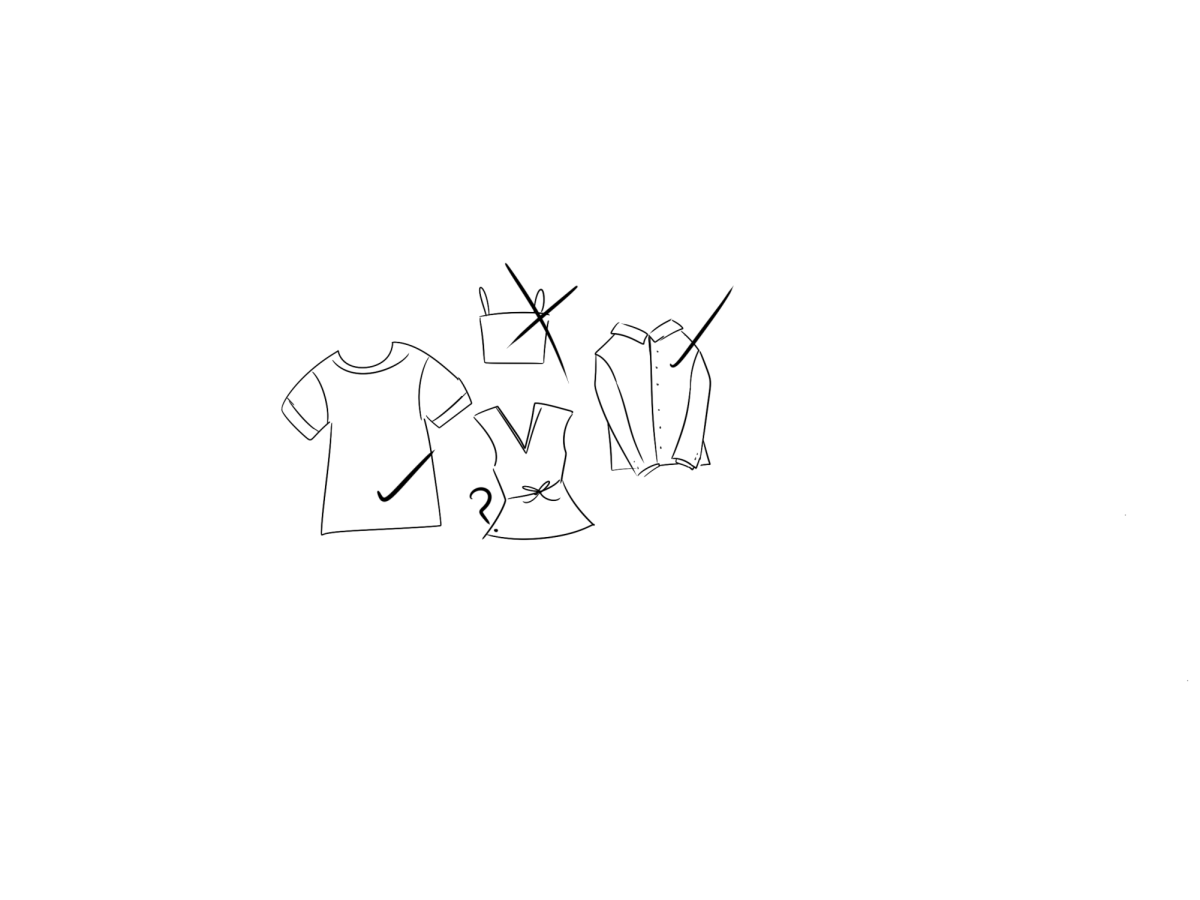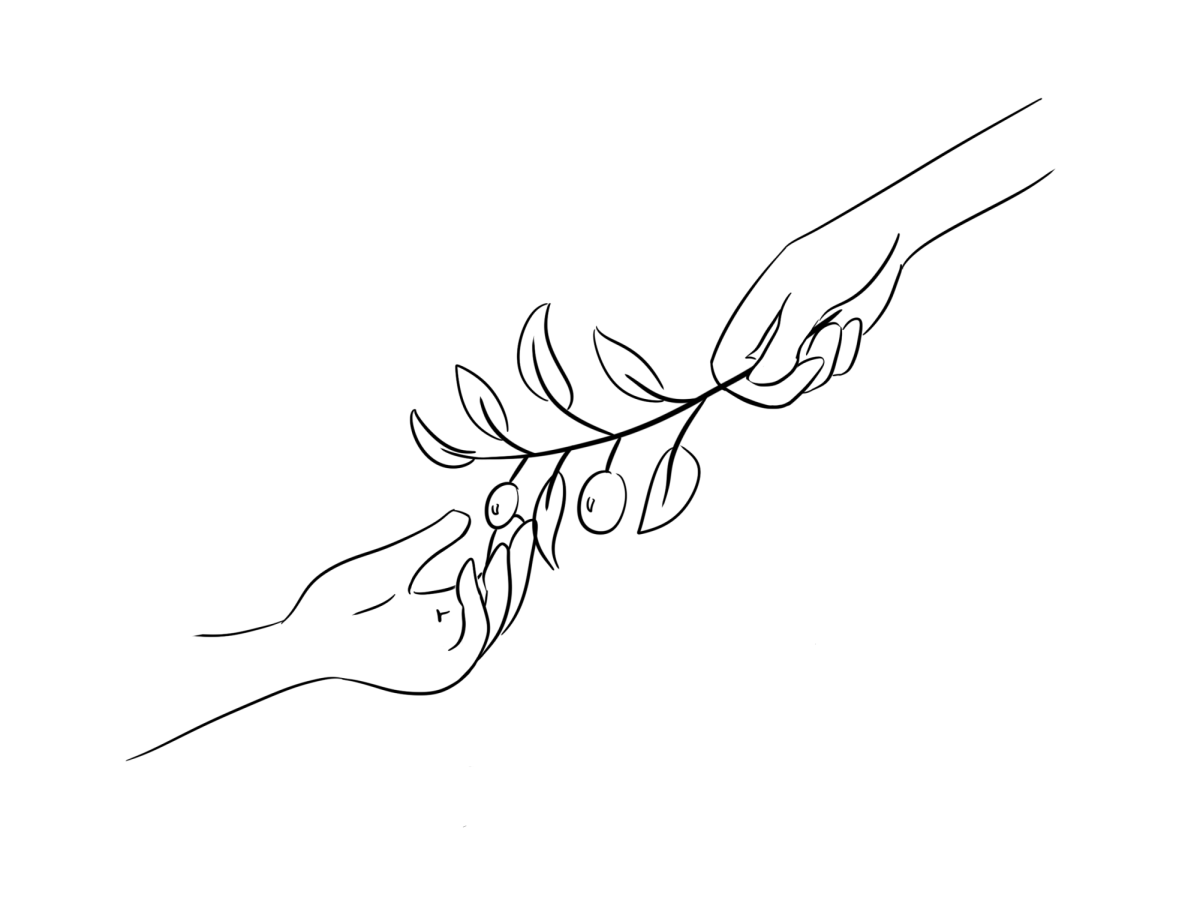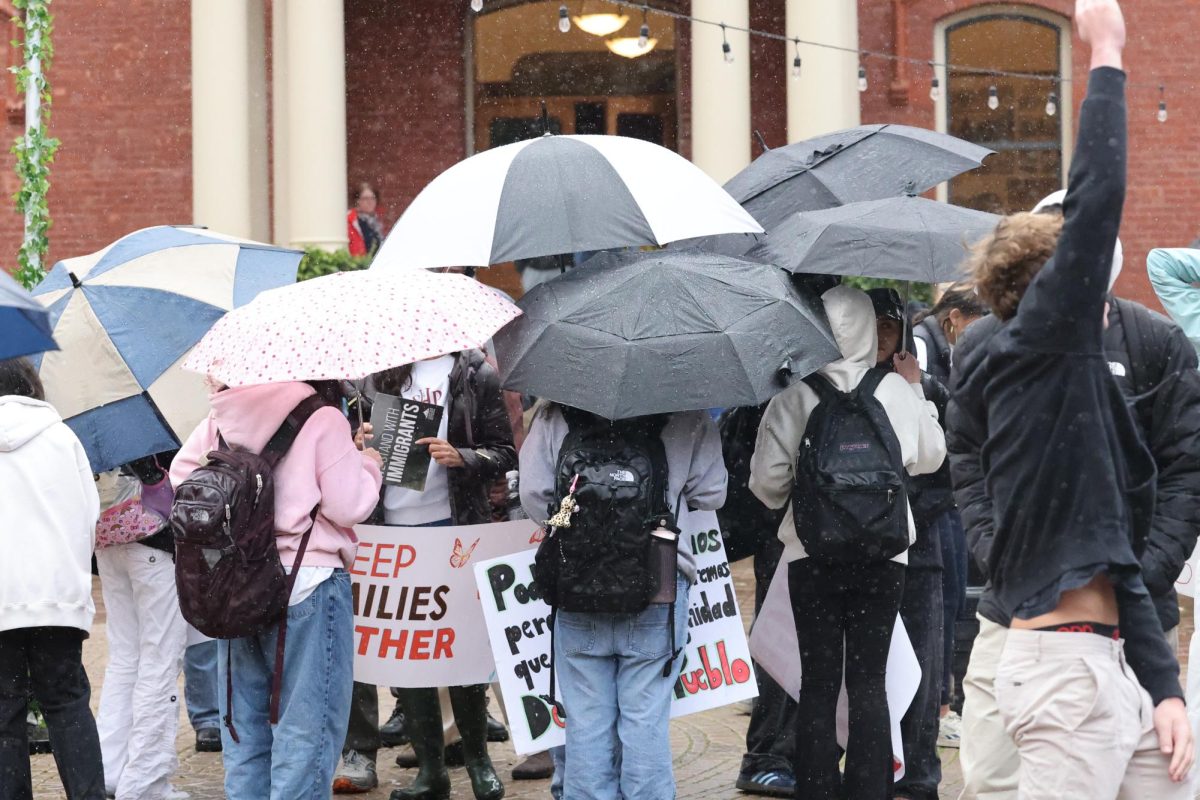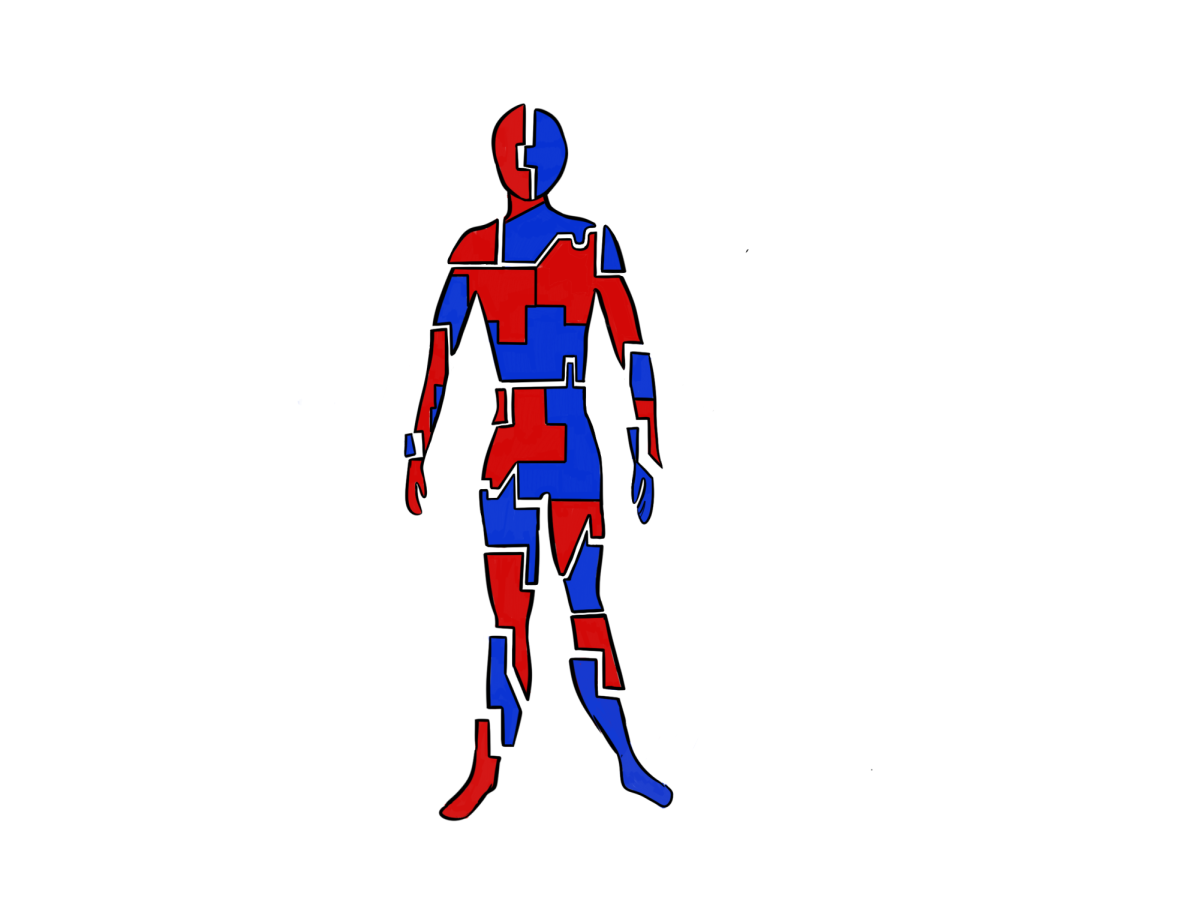The dress code at SHP has become almost as hotly debated as the curriculum. What is deemed as “acceptable” has inspired students to consider larger questions about self-expression and the line between personal comfort and others’ comfort. Simply put, the dress code is too strict. Nevertheless, teachers and administrators stress the need for a respectful “work and worship” environment. Some students, however, question whether the dress code reflects everyday life or just the school’s ideals – modesty, professionalism, and equality.
The dress code itself is located in the SHP Family Handbook. It requires that “shirts must have straps,” prohibiting off the shoulder tops. Additionally, it says that the hemlines of shorts and skirts must be fingertip length. Regarding shoes, the dress says only that they are “required on campus at all times,” with nothing specific referring to flip flops. Dress Attire, intended for special events on campus like Mass, adds additional requirements such as the necessity for shoulders to be covered. In a section labeled “Never,” the dress code lists several items students are banned from wearing, including but not limited to: “inappropriately sized clothing, e.g. low cut and or midriff baring; under-sized pants, shorts, skirts, or shirts; spaghetti straps… pajamas.”
This year, Dr. Whitcomb states that “students are finding out who they are while navigating the dress code.” The dress code has been discussed as a mandatory expectation to uphold and obey as students. But with new opinions surfacing from faculty and students, students bring up bigger questions about the dress code: Do these rules impact all students equally? Do these rules affect how students express themselves? And finally, does anyone actually care about following the dress code?
Principal Whitcomb and Mr. Douglas Hosking explained that the purpose of the dress code is to create a professional and respectful environment. Since we are a Catholic school, Hosking raised the thought that “it’s about the amount of skin that’s being shown to create a professional environment and not a distracting environment for people.” Whitcomb also noted that “what used to be more understood is now shifting and changing in the present day,” and “without guidelines, students may not know what is appropriate, and what is not.”
New enforcement systems make it easier for teachers to report violations. Ms. Julie Tsutsui described it as part of her responsibility as a teacher. She explained, “I don’t think it’s that hard to follow the dress code. Like, I think there are lots of rules in life, and some of them we agree with, and some of them we don’t agree with. But we’ve been asked to kind of monitor this year. And so I’m taking that to hand as the administration asked and trying to be a team player, right?” However, she also noted, “some of it is maybe … a philosophical difference,” highlighting that some students view school rules regarding the dress code differently than others, therefore causing a misalignment with school expectations of modesty.
Students, however, notice that enforcement doesn’t always feel balanced. Student Body President Andre Freccia ‘26 said, “As a guy, it doesn’t affect my day-to-day wear at all.” He also mentions, “because there is a lot of… restricting things for girls.” This raises the point of how boys often dress similarly, while girls face more direct scrutiny for various items of clothing. This suggests one of the biggest concerns students have: Does the dress code disproportionately affect girls?
When asked this question, Hosking replied with an immediate, “Yeah. 100%.” However, Tsutsui disagrees, stating, “I think the dress code is fair, because if a boy wanted to wear a halter top to class, I’d code him as well. If a boy wanted to wear super, super, super short, short shorts, I’d code him as well, because that’s what the dress code says.”
So where does this leave SHP? Many students view the dress code as unnecessarily strict, as if every outfit has the potential to be dress-coded. It doesn’t account for personal expression, comfort, or the realities of daily life at school. Class President Brie Eisenberg ‘28 said “people care more about style, what others think of them [than dress code].” Rules about skirt length, shirt coverage, and even shoe choice make students constantly second-guess their clothing, turning something that should be simple into a source of stress. The dress code enforces a rigid version of ‘respect’ that prioritizes appearance over individuality, leaving us frustrated, paranoid, and constrained instead of confident and focused.
To some, the dress code creates a standard of professionalism; to others, it’s a restriction on individuality. Students and teachers alike are rethinking the role clothing plays on campus—not only in how we dress, but in what it says about who we are. The real question may not be if students follow the code, but if the code still fits the students it was written for.







